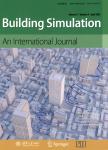Developing occupant archetypes within urban low-income housing: A case study in Mumbai, India
作者机构:Lawrence Berkeley National Laboratory1 Cyclotron RoadBerkeleyCA 94720USA Centre for Urban Science and EngineeringIndian Institute of Technology BombayMumbai-400076India Department of ArchitectureUniversity of CambridgeCB2 IPXUK
出 版 物:《Building Simulation》 (建筑模拟(英文))
年 卷 期:2022年第15卷第9期
页 面:1661-1683页
核心收录:
学科分类:12[管理学] 1204[管理学-公共管理] 0807[工学-动力工程及工程热物理] 0814[工学-土木工程] 120405[管理学-土地资源管理]
基 金:The work is also supported by Ministry of Human Resource Development,Government of India under the MHRD-FAST Grant[14MHRD005] IRCC-IIT Bombay Fund,Grant No.[16IRCC561015]。
主 题:occupant archetype behaviour energy use thermal comfort low-income housing
摘 要:Rapid urbanization pressure and poverty have created a push for affordable housing within the global south.The design of affordable housing can have consequences on the thermal(dis)comfort and behaviour of the occupants,hence requiring an occupant-centric approach to ensure sustainability.This paper investigates occupant behaviour within the urban poor households of Mumbai,India and its impact on their thermal comfort and energy use.This study is a first-of-its-kind attempt to explore the socio-demographic characteristics and energy-related behaviour of low-income occupants within Indian context.Three occupant archetypes,Indifferent Consumers;Considerate Savers;and Conscious Conventionals,were identified from the behavioural and psychographic characteristics gathered through a transverse field survey.A two-step clustering approach was adopted for occupant segmentation that highlighted considerable diversity in occupants’adaptation measures,energy knowledge,energy habits,and their pro-environmental behaviour within similar socio-economic group.Building energy simulation of the representative archetype behaviour estimated up to 37%variations for air-conditioned and up to 8%variation for fan-assisted naturally ventilated housing units during peak summer months.The results from this study establish the significance of occupant factors in shaping energy demand and thermal comfort within low-income housing and pave way for developing occupant-centric building design strategies to serve this marginalized population.The developed low-income occupant archetypes would be useful for architects and energy modelers to generate realistic energy use profiles and improve building performance simulation results.



